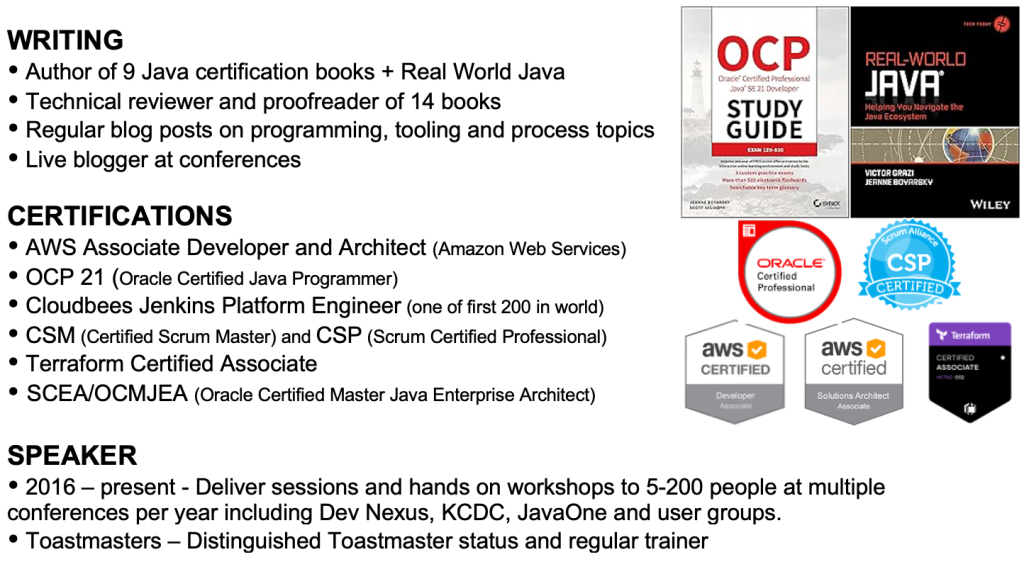Every year I update my resume. This year, I got to add “Real-World Java: Helping You Navigate the Java Ecosystem!” It’s for
- Those who know the syntax/language, but not the whole ecosystem
- Students
- People transferring from another language.
- People who haven’t worked with Java in many years
- People on legacy projects
For many years I’ve had the cover of my book and some certification badges on my resume. I had them as individual images up until now. This time I wanted to do better because I wanted the covers to be aligned.
Making the image
I used PowerPoint to align the images. (I also have Keynote on my computer, but PowerPoint was open as Victor and I are using it for our upcoming presentation at the NY/Garden State Java User Groups and DevNexus. Both tools make it easy to align images. I then did a copy and paste special to get a PNG of this is as one big image.
Note: We do not make images for the cert book this ways. Scott made all those images using a proper image editing tool.
Getting it in Word
When you paste into Word, it automatically inserts it into the text. I didn’t want that. I wanted more control.
Instead i right clicked the image and choose Wrap text > In front of text. Then I dragged it to where i wanted.
How it looks
Here’s how the section of my resume for the stuff I don’t do for my employer.

